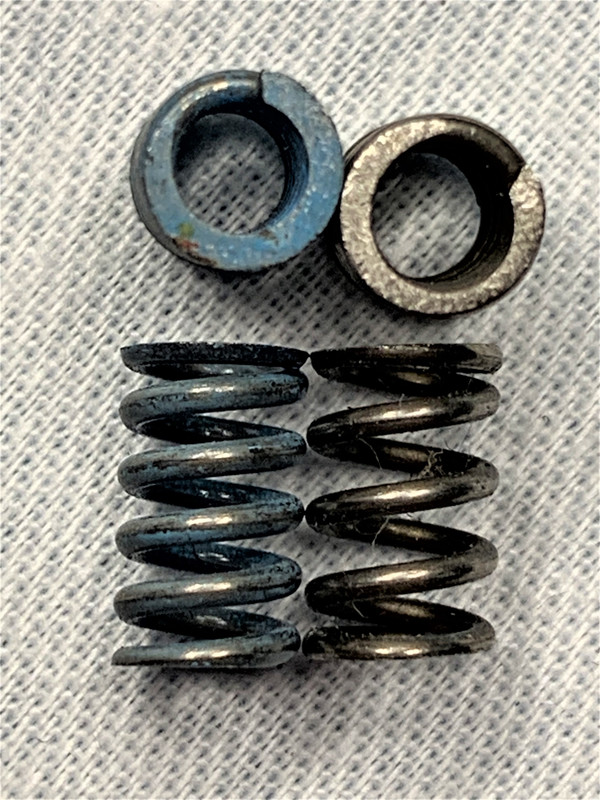Quote:
Originally Posted by whooper333

...
so here is where I am screwed up; I don't mean to harp on fastbolt, but going back to what that S&WPC guy told him about moment of mass thing; is the consensus that I should increase extractor tension to prevent fte. or is it not so fast there, it could be the shake rattle and roll is causing the extractor spring to go into resonance thus causing the fte and it might require a weaker spring to correct the issue. I think I am starting to see stars again.
the reason I say this is because the original spring is made of the thickest wire and has the most turns anything else I am guessing will measure less in pull weight. maybe I should get the numbers and we can continue from there.
|
Perhaps you're overthinking things.
This is a .45ACP pistol extractor spring. It isn't a motor valve spring having to support valve timing at sustained high RPM's.
Here's a very quick pic I just took out at my bench of some 3rd gen .45 (10) extractor springs.

The unpainted spring is the Standard spring and the blue one is a Heavier spring.
Note the Standard spring has 5 coil windings and the Heavier one has 6 coil windings. Also note that typical with S&W factory extractor (and other) springs,
both the ends are ground flat, making for what S&W engineers call a "closed" spring.
Now, once you start experimenting with non-factory springs, which may not have flattened ends, and which may be of different wire gauge and number of coils, or even different compressed lengths ... you're probably on your own.
If the extractor spring tension is
too heavy, you're probably going to cause feeding problems. That's usually due to there being
too much resistance (spring tension) acting against the rising case rim being able to slide underneath the extractor hook, "camming" the extractor outward in the right "feeding timing" as the case base slides up the breech face.
If the spring tension is
too light, you're going see failures-to-extract. That's caused bu the recoil force (shock) traveling
outward. It's going to act upon the extractor (only being held in place by its own mass and its spring), and the extractor's mass and spring tension will be insufficient to hold the extractor hook sufficiently firmly against the case rim at a critical moment. Instead, it may "bounce"
outward and over the case rim, and as the slide travels backwards slightly differently than the dropping barrel, the hook will end up bouncing back inward
behind the case rim that's now in front of the hook.
The factory engineers gave armorers the "sweet spot" of a recommended tension range. They also gave armorers some optional spring weights in case some particular slide's spring hole depth (or shape at the bottom) might need to be offset with a different spring.
I remember one factory tech telling me that some of the older machinery wasn't nearly as precise, nor was the sharpness of the cutters as easily monitored as it was later, with computers. That was why in the early 59XX slides we might need to use that "nested" extractor spring set made as a Repair Kit for armorers fro a while.
If the bottom of the spring hole wasn't cut square enough to allow the Standard spring to sit all the way down and flat on the bottom, then a lighter spring was chosen and paired with a smaller & taller diameter "inner" spring, to get the tension range up where it needed to be.
Of course, the tech said that if a gun with that wrongly machined spring hole was sent back to the factory, he'd use a hand-turned ball end mill tool to cut bottom of the spring hole to the correct shape, so the standard spring would be used. Naturally, since most armorers
aren't experienced factory techs or gunsmiths, they provided armorers with a simple "field" repair method. We got the nested spring kit, which was later replaced with a choice of 2 different standard size single springs to try in a gun with a spring problem, and the nested spring kit became obsolete.
BTW, if you're "seeing stars", you really ought to consider having someone familiar with the pistol take a look at it. No sense in going the "trial & error/never done this" route and risking doing something that may make things worse.
Have you tried to be connected over to the actual Performance Center itself, yet?
Tried to contact forum member BMCM?